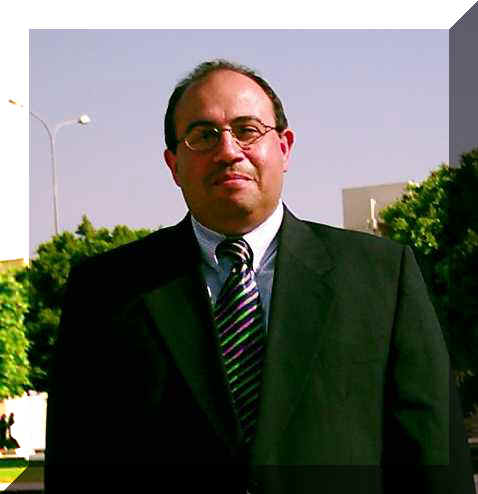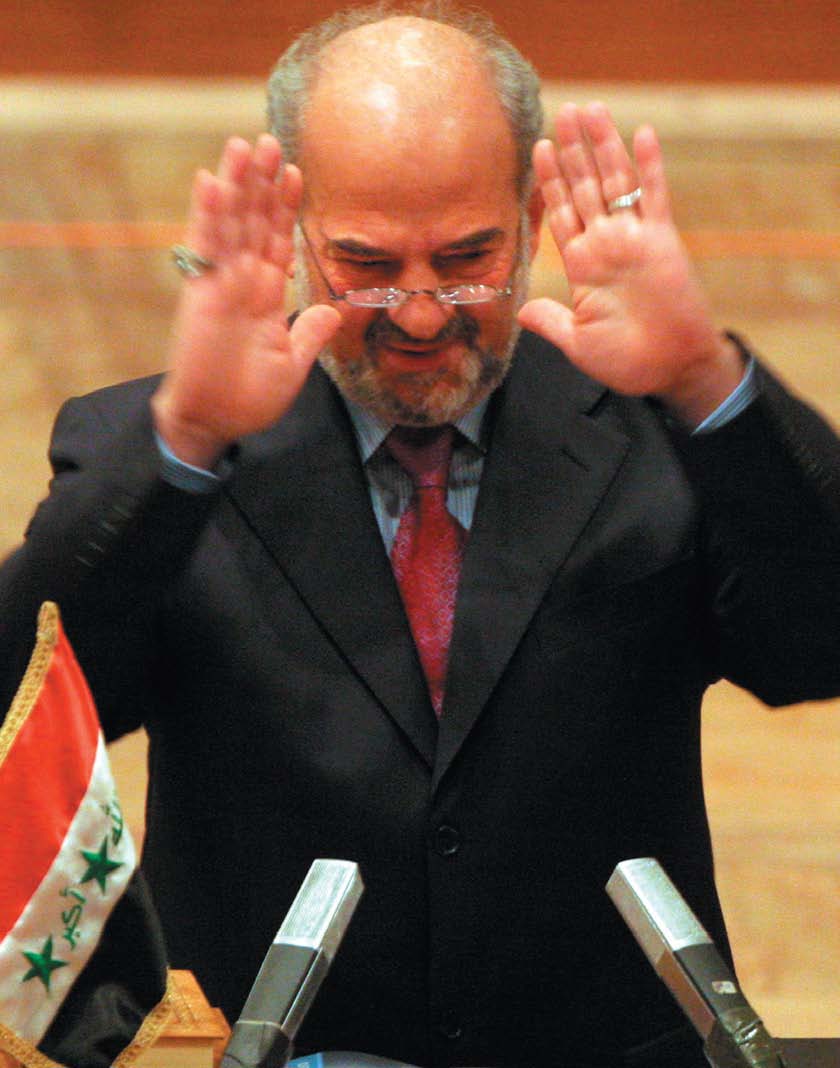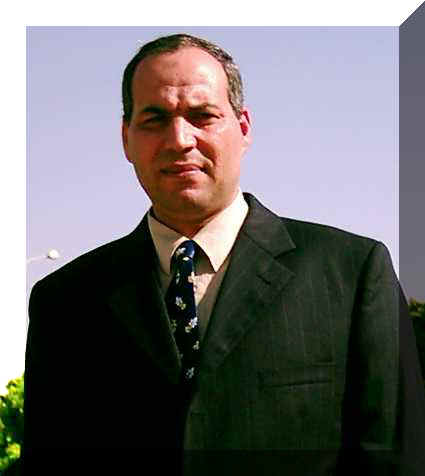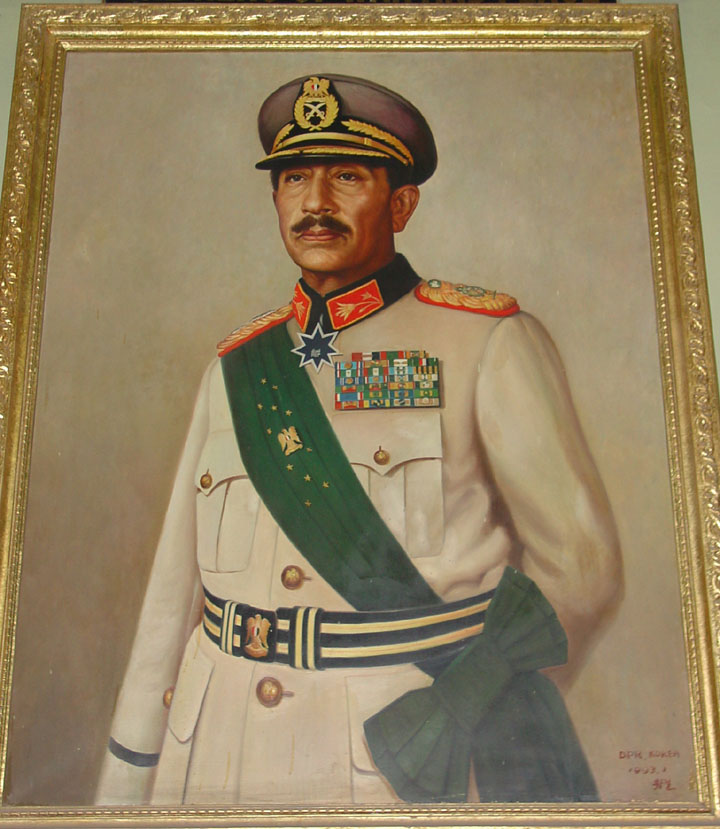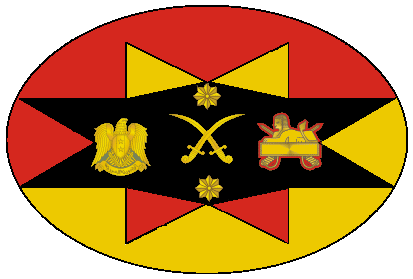Egyria
Summary
The Socialist Sheikdom of Egyria was a headstrong, heavily left-wing nation in the Middle East.
"Egyria" was legally an alliance between the state of Egypt and the state of Syria, much like the old Austro-Hungarian Empire. The alliance came about with the increasing growth of established supernations such as Paradise, United Elias, Patrua, and Catholic Europe. The two states agreed that the best way to survive in this new world would be to work together. The actual name of this alliance was The Socialist Sheikdom of the Great Alliance of Egypt and Syria.
Egyria started off heavily communist, and while communism was still a powerful influence in the nation, Egyria naturally drifted to a more socialist outlook in order to compete with other nations. Egyrians faced high taxes but had many services provided to them by the government, including education (including university), medical, public transportation, and legal counsel. As a rule, Egyria's population was as a whole well taken care of, but an individual Egyrian was not very rich. The government, however, was able to handle virtually any necessary costs.
Egyrians were very proud of what they considered "The Great Experiment" and were notable for being a little arrogant and enormously stubborn.
Database (at time of Egyria's collapse)
Population
Total population: At the time of Egyria's collapse the population was approximately 2,100,000,000 people.
Locale*: 59% Egypt, 41% Syria
Religious composition*: 70% Sunni Muslim, 12% Protestant Christian, 9% Shi'a Muslim, 4.6% Jewish, 3.2% Orthodox, .7% Catholic, .5% "Other"
Governmental
Anachronistic Official Legal Name: The Socialist Sheikdom of the Great Alliance of Egypt and Syria
Conventional English Form (this is used by the government and so has been nominally adopted): The Socialist Sheikdom of Egyria
Conventional Short Form: Egyria
Type: socialist-based constitutional monarchy
Capitals: Thebesia (Egypt), Mamluk (Syria)
Administrative Divisions: 2 (Egypt, Syria)
National Holidays: 3 December (Aliance Day)
Suffrage: Males and females over 18; males must have served in the military for at least one full year (in practice this means at least 19)
Leadership
Chief of State: Sheik Saddam bin Mohammed
Term of Election**: Life
Title: Sheik of Egyria
Style: His Eminence
Associated Leaders***: The Council of Ministers of Egyria
-Minister of Diplomacy: Chief Ambassador Omar ibn Zaid
-Minister of the Economy: Nabil Yacoub
-Minister of Education: Foaud Rizbari
-Minister of Religion*: Imam Mohammed Farah Aidid
---Minister of Protestant Christianity: Not yet appointed
---Minister of Shi'a Islam: Imam Farouk Barki
---Minister of Orthodox Christianity: Not yet appointed
---Minister of Judaism: Not yet appointed
---Minister of Catholic Christianity: Not yet appointed
---Minister of All Other Religious Denominations: Not yet appointed
-Minister of War: Farah Jinai
Notes
- Technically, according to Egyrian Law, there was a representative for every religion within Egyria - a Catholic, a Protestant, a Jew, etc. - and they were minor ministers. The Minister of Religion was always of the most dominant religion - which happened to be Sunni Islam. Thus, there was never a non-Sunni Islam religious minister, although legally there was no reason that couldn't change if Sunni Islam suddenly fell out of fashion.
What was interesting about all this is that Egyria does not conduct any census' except to calculate population - religion was not counted, except after the election of a new Sheik. It was assumed that Egyria's population were predominantly Sunni Muslims. There was a mathematical probability formula purportedly used to "guesstimate" what Egyria's population was like at a given point in time, but it wasn't not necessarily correct.
Theoretically, one could lobby for a referendum to hold a census to check the data, but no one ever did so.
- Any citizen who served in the Egyrian military could run for the position of Sheik, with the exceptions of any current or former 'Adhamah Guardsmen - or their generals.
Women were not allowed to run for Sheik.
A series of preliminary physical tests followed to assure that a citizen was in good health. Intense psychological tests were designed to further narrow the field, and to eliminate any criminal minds. Written exams followed - only the brightest minds were allowed to continue on to the second-to-last phase, the runoff election. The winners of this election were allowed to compete in the election proper.
There were no political parties in Egyria. Instead, final candidates categorized themselves into a series of primary idealogies, while a computer test checked and modified the results as seen fit.
- These men had no legal authority - everything had to be confirmed by the Sheik unless otherwise stipulated.
Egyrian Armed Forces
The following are compilations of released documents after the collapse of Egyria
EGYRIAN ARMED FORCES
PUBLIC DECLASSIFIED VERSION
Ballistic missile range: Intercontinental
Nuclear capability: Yes
Army:
20,000,000 soldiers (including infantry and tank operators, and 'Adhamah Guard)
Tanks:
T-90: 8,000 Merkava: 180
IFV/APCs:
IFV: 105,000 AIFV APCs: 150,000 OT-64C(1) Armored trucks: 225,000 KrAZ-255B
Artillery:
Towed: 30,000 pieces SP: 5,000 vehicles
Rocket Systems:
Over 5,000 of varying types, including 300 ICBM's and 1,000 cruise missiles
AAA:
Over 40,000 systems, including mobile and ground emplacements
Air Force:
Fighters: 6,500 MiG-23 "Flogger" Strategic bombers: 3,010 ACG-188 "Golden Eagle", 300 Tu-95 "Bear" Tactical bombers: 3,200 Su-25 "Frogfoot" Interceptors: 1,100 EAC-12 "Wali" Patrol: 370 EAC-24 "Swallow"
Naval:
Ships:
1 supercarrier ('Adhamah) 3 aircraft carriers (Olympic, Titanic, Gigantic) 5 superbattleships (Invincible, Indefatigable, Indomitable, Incredible, Indestructible) 10 battleships 75 missile cruisers 35 AEGIS missile defense cruisers 35 close-range missile defense destroyers (equipped with multiple automated Gatling cannon emplacements) 60 submarines (equipped with both torpedoes and ballistic missiles)
'Adhamah (Majestic) Guard (elite military core):
150,000 men
TOTAL FORCE BREAKDOWN:
Army: 1,498 Divisions (2 irregular) All Egyrian divisions except the 'Adhamah Guard '"divisions" contain 10,000 men
1st 'Adhamah Guard "Division" 2nd 'Adhamah Guard "Division" 3rd-10th Infantry Division 11th-17th Paratrooper Division 18th-99th Infantry Division 100th-228th Cavalry Division 229th-390th Infantry Division 391st-399th Cavalry Division 400th-1190th Infantry Division 1191st-1200th Cavalry Division 1201st-1490th Infantry Division 1491-1498th Cavalry Division
Typical Division:
'Adhamah Guard
60 Merkava Tanks designed for primary assault and engagement 1 105mm rifled cannon; 1 7.62mm machine gun
60 AIFV armored fighting vehicles designed to spearhead an assault; 7 soldier capacity 1 25mm cannon; 1 7.62mm machine gun
5 ZSU-23-4 self-propelled anti-aircraft guns designed to grant covering fire against close air support and enemy positions 4 23mm cannon
10 ZSU-57-2 self-propelled anti-aircraft guns designed to grant covering fire against close air support and enemy positions 2 57mm cannon
3 IMR Armoured Engineering Vehicles designed for field engineering purposes 2 smoke dischargers
3 PMP Floating Bridge vehicles designed to allow bridging of water obstacles 2 smoke dischargers
60 GAZ-69 trucks designed for general-purpose and reconnaisance duties; 4 soldier capacity none
10 Walid rocket systems designed for artillery purposes 12 80mm rocket tubes
10 BM-27 rocket systems designed for artillery purposes 16 220mm rocket tubes
200 artillery cannons designed for artillery purposes usually 75 100mm field guns, 100 150mm heavy guns, 25 180mm heavy guns
INFANTRY The typical infantryman is armed with an AK-47 assault rifle and 4 7.62mm ammo magazines, three fragmentary grenades, and 1 P-228 handgun and 2 9mm ammo magazines. He also has night-vision equipment, a gas mask, and a pair of fragmentation-protection goggles
40 AIFV armored fighting vehicles designed to spearhead an assault; 7 soldier capacity 1 25mm cannon; 1 7.62mm machine gun
1200 OT-64C(1) armored personnel carriers designed to carry assault elements to the front; 15 soldier capacity 1 7.62mm machine gun
1200 KrAZ-255B armored trucks designed to carry infantry into necessary positions; 25 soldier capacity 1 7.62mm machine gun
5 ZSU-23-4 self-propelled anti-aircraft guns designed to grant covering fire against close air support and enemy positions 4 23mm cannon
5 ZSU-57-2 self-propelled anti-aircraft guns designed to grant covering fire against close air support and enemy positions 2 57mm cannon
2 IMR Armoured Engineering Vehicles designed for field engineering purposes 2 smoke dischargers
1 PMP Floating Bridge vehicles designed to allow bridging of water obstacles 2 smoke dischargers
40 GAZ-69 trucks designed for general-purpose and reconnaisance duties; 4 soldier capacity none
10 Walid rocket systems designed for artillery purposes 12 80mm rocket tubes
5 BM-27 rocket systems designed for artillery purposes 16 220mm rocket tubes
200 artillery cannons designed for artillery purposes usually 75 100mm field guns, 100 150mm heavy guns, 25 180mm heavy guns
CAVALRY (armored)
60 T-90, T-80, or T-72 tanks designed for primary assault and engagement T-72: 125mm gun, 12.7mm machine gun, 7.62mm machine gun; T-80: same as T-72; T-90: same as T-72
60 AIFV armored fighting vehicles designed to spearhead an assault; 7 soldier capacity 1 25mm cannon; 1 7.62mm machine gun
5 ZSU-23-4 self-propelled anti-aircraft guns designed to grant covering fire against close air support and enemy positions 4 23mm cannon
5 ZSU-57-2 self-propelled anti-aircraft guns designed to grant covering fire against close air support and enemy positions 2 57mm cannon
2 IMR Armoured Engineering Vehicles designed for field engineering purposes 2 smoke dischargers
2 PMP Floating Bridge vehicles designed to allow bridging of water obstacles 2 smoke dischargers
40 GAZ-69 trucks designed for general-purpose and reconnaisance duties; 4 soldier capacity none
10 Walid rocket systems designed for artillery purposes 12 80mm rocket tubes
5 BM-27 rocket systems designed for artillery purposes 16 220mm rocket tubes
200 artillery cannons designed for artillery purposes usually 100 100mm field guns, 80 150mm heavy guns, 20 180mm heavy guns
AIR FORCE DATA
500 Fighter Squadrons 190 Strategic Bomber Squadrons 250 Tactical Bomber Squadrons 90 Interceptor Squadrons 30 Patrol Squadrons
NAVAL DATA: SEE ABOVE
The current status of Egyria's former armed forces is not known.
Diplomatic Relations
Patrua
Patrua was the most powerful nation in the Middle East and one of the most powerful in the world until its mysterious governmental collapse.
Egyria long looked up to Patrua as a "big brother" in the Middle East, although this relationship was rarely reciprocated. More often than not Patrua and Egyria were at odds with one another, and Egyria's trust gradually waned with Patrua over time, although the two nations eventually became stalwart allies.
Wadj
Wadj was a smaller Sultanate in what was once Iraq. It can claim descendance from ancient Persia and even Seleucus, one of Alexander the Great's generals.
Egyria's pride inevitably led to arrogance as it sought to become more influential in the Middle East. After being mildly snubbed by Patrua, Egyria sought to be the "big brother" - this time, Wadj's.
The Egyrians had more luck with this relationship. Wadj and Egyria became very close diplomatically. This began to unravel slightly just before Egyria's demise. Wadj entered the White Palace Accord - which Egyria was not considered party to until it deliberately asked. Also, when Scythirus invaded Wadj for the second time, Egyria immediately sent aid but then cut back on it when it discovered Wadj had accepted Catholic European help - anathema to Egyria.
The Resplendent Dawn
The Resplendent Dawn was usually quieter in the Middle East than its neighbors - but often found itself in the middle of the region's biggest problems.
Egyria and The Resplendent Dawn were good allies but never great ones. This was odd because Egyria was one of Dawn's biggest supporters against Catholic European aggression. However, Egyria found itself so busy maneuvering with Patrua and Wadj that deeper relations were not pursued.
Privately many Egyrians considered The Resplendent Dawn to be a little "soft," which may have also had an impact.
An Najm
An Najm was like a smaller version of The Resplendent Dawn - quiet, but caught up in big things.
An Najm was Egyria's first real ally in the Middle East. Relations were close between the two nations - especially after the brief December War with Catholic Europe - but An Najm eventually disappeared from the Middle East under unknown circumstances.
Scythirus
Scythirus was a theologically-fascist, mysterious nation that was wholly unpredictable.
Egyria naturally adopted a somewhat-cool relationship with Scythirus - partially because Scythirus had a dark reputation, but also because it was what Patrua was doing.
During the First War of Succession the Egyrians found themselves allied with Scythirus. Relations drifted closer until Scythirus sent two nuclear missiles at Catholic Europe - one in Genesis City, the other in Rome. The missile that hit Rome wiped out almost 10,000 Egyrian paratroopers attacking the city.
Egyria immediately considered Scythirus Enemy Number Two - only after Catholic Europe - and aided Wadj against them in the Second War of Succession until Egyria found itself in a civil war - one that was caused almost directly by Scythirus.
Catholic Europe
Catholic Europe was also a theologically-fascist nation, but was less mysterious and more predictable.
Egyria almost never had good relations with Catholic Europe. Relations started off bad as a matter of course - Egyria was predominantly Muslim, and the Papacy hated seeing Muslim power - and grew worse as time progressed.
Very soon after Egyria's formation, war broke out between Catholic Europe and The Resplendent Dawn. Egyria interfered when An Najm, a close (and neutral) ally, was suddenly invaded for no cause whatsoever. The war petered out with no real conclusion, but it set the tone for Papal-Egyrian relations.
Egyria contested the Catholic European hegemony whenever possible. The closest relations came between the two nations was when, during the First War of Succession, Egyria agreed to a secret neutrality agreement with Catholic Europe, prolonging the war until finally Egyria went to war alongside the other Middle Eastern nations.
It was to Catholic Europe that Egyria finally surrendered to.
Notable Figures
Sheik Omar bin Kazali
Sheik Omar bin Kazali, an Egyptian, was the first elected Sheik of Egyria (there had been several provisional governors while the unification was taking place).
An extremely popular man, Sheik Omar bin Kazali ran on the Socialist ticket and started off with a more fundamentalist Muslim viewpoint until he gradually moderated his diplomatic style.
Sheik Omar bin Kazali was assassinated by a Scythrian agent on 19 June 2005.
Imam Achmed bin Mohammed
Imam Achmed bin Mohammed, Egyrian Minister of Religion, had heavy influence in the early days of Omar bin Kazali's reign, although he eventually was marginalized.
The whole Council of Ministers was killed by a Scythirian agent on 19 June 2005.
Sheik Saddam bin Mohammed
Sheik Saddam bin Mohammed, also an Egyptian, was the second elected Sheik of Egyria. The elections were initially delayed because of the destructive Egyrian Civil War.
He double majored in Law and International Studies at The Nile University, and ran on the Socialist ticket. He was a more moderate Sheik than his predecessor.
His current whereabouts are not known.
Chief Ambassador Omar ibn Zaid
Chief Ambassador Omar ibn Zaid was head of the Ministry of Diplomacy under Sheik Saddam bin Mohammed.
His current whereabouts are not known.
Foaud Rizbari
Foaud Rizbari was head of the Ministry of Education under Sheik Saddam bin Mohammed.
His current whereabouts are not known, although he is believed to have escaped to the United States.
Imam Mohammed Farah Aidid
Mohammed Farah Aidid competed against Saddam bin Mohammed in the Egyrian National Elections as a Religious Conservative, but was later appointed head of the Ministry of Religion by bin Mohammed.
His current whereabouts are not known.
Farah Jinai

Farah Jinai was a Colonel in the Egyrian Army when the Civil War broke out. He proved to be a brilliant guerilla commander against rogue General Abdel and was appointed Minister of War by Sheik Saddam bin Mohammed.
Farah Jinai was assassinated by Russian KGB after fleeing to Pakistan.
General Ayyubid Aliph
General Ayyubid Aliph was in command of the Egyptian 'Adhamah Guard when the Egyrian Civil War broke out. He immediately worked with his Syrian counterpart General Abbasid bin Sawari to form the Confederation to Restore Egyria. His defeat of rogue General Abdel in Egypt eventually gave him the title "Savior of Egyria" by grateful Egyrian citizens. They called for him to run for Sheik or to be appointed Minister of War, almost beginning a referendum to change Egyrian law to allow him to do so but he refused and retired. General Moustafa was his replacement.
Ayyubid Aliph was assassinated by Russian KGB after fleeing to Pakistan.
General Abbasid bin Sawari
General Ayyubid Aliph was in command of the Syrian 'Adhamah Guard when the Egyrian Civil War broke out. He worked with Egyptian counterpart General Ayyubid Aliph to form the Confederation to Restore Egyria. He secured Syria while Ayyubid Aliph fought against General Abdel. He, too, refused to take a governmental post after the Civil War ended, and retired. General Jafar was his replacement.
Abbassid bin Sawari was assassinated by Russian KGB after fleeing to Pakistan.
The Egyrian National Elections
Egyrian Military Operations and Campaigns
The December War
Soon after Egyria's formation, it found itself in the abortive "December War" against Catholic Europe after seeing its ally An Najm - neutral in the dealings until that point - invaded. There was little fighting and many are still not sure exactly what the war was about or how it actually occured.
Negotiations of the Treaty of Antioch were prolonged so often that it was eventually cancelled due to the First War of Succession.
The February War
The small nation of Kurdistan, by the Caspian Sea, found itself in a civil war. Egyria and An Najm supported the South Kurdistani secession and instigated a DMZ between the two halves of the nation. North Kurdistan repeatedly violated the DMZ and Egyria began bombing campaigns with Tu-95 "Bear"'s and ballistic missiles. North Kurdistan sent a retaliatory missile strike against Thebesia but only one missile hit, and it was in an already-evacuated neighborhood. Egyrian paratroopers, along with An Najm forces, easily beat back the ragtag North Kurdistani militia until they sued for peace. The result was the February Treaty:
Egyria, An Najm, North Kurdistan, and South Kurdistan,
NOTING that it is within the rights of the South Kurdistanis to declare themselves independent, and
NOTING that all nations are sovereign, and
RECOGNIZING that North Kurdistan cannot win this war;
1) Allows for the establishment of South Kurdistan as a legitimate nation
2) Grants An Najm territory to maintain a buffer between the Kurdistans
3) Grants Egyria territory to maintain a buffer between the Kurdistans
4) Allows Egyrian and An Najm inspectors to check for NBC (nuclear, biological, chemical) weapons and ballistic missiles in North Kurdistan without warning
5) Establishes that North Kurdistani military strength may not exceed during peacetime 75,000 soldiers of all arms; NBC weapons or ballistic missiles are not allowed (see Clause 4)
6) Insists that reparations of US$4,000,000 be paid to An Najm and Egyria by North Kurdistan
7) Insists that reparations of US$3,000,000 be paid to South Kurdistan to aid in the establishment of a government there by North Kurdistan
8) All soldiers in the region are ordered to immediately withdraw to their respective territories
9) Allows the North Kurdistan government to operate as standard
10) Allows the North Kurdistan to petition to the Middle East Council on any further issues of seccession
11) Grants North Kurdistan 20,000 tons of oil from Egyria and 5,000 tons of steel from An Najm in order to rebuild their industry
AND DECIDES to remain actively concerned in the matter.
Signatories:
Egyria
Ambassador Kassad bin Ibrahim
An Najm
Ambassador Faris ibn Rashad
South Kurdistan
President Hassan Mosuloud
North Kurdistan
Chairman of the State Muhammad Massoud
Egyria and An Najm later lost the territory they had gained after pressure from the other Middle East nations, but the February War was an important boost to Egyria's confidence that it could affect a larger change in the Middle East.
The two Kurdistani nations later dissolved.
Operation Cataract Capture
Following a terrorist attack that poisoned the Nile River, Egyria attempted to secure those areas of the Nile not controlled by United Elias. It was seen as a territory annexation, however, and Egyria backed down after pressure from Patrua.
The War of the Dawnsian Succession (The First War of Succession)
General Yonatan, Supreme Commander of the Imperial Armed Forces of The Resplendent Dawn, seized the capital city of Antioch and deposed the Catholic-sympathetic royal family, ruled by Emperor Emmanuel. Princess Maryam, his heir, fled to Catholic Europe. General Yonatan held a succession conference in Antioch, which was attended by Sheik Omar bin Kazali, among other foreign dignitaries.
Tensions flared when the Dawnsian Army occupied Cyprus when the Royal Family was moved there. Cyprus was regarded as Catholic European territory by the Papacy.
The situation soon began to run out of control. Sheik Omar bin Kazali supported General Yonatan and warned the Papacy that Maryam could not be installed by force. Sheik bin Kazali then sent a proposal to the Papacy to avert warfare:
PRIVATE CABLE
TO: Catholic European Administration FROM: His Eminence Sheik Omar bin Kazali of Egyria RE: The Resplendent Dawn
To the Papacy -
I understand the volatility of this situation, and I'm sure you do as well.
War is coming. This is something we wish to avoid, and are willing to stop it for a price.
You have always considered my country as "imperialist." This is not so, and to prove it, this is my offer:
1) Egyria will cede all Kurdistani territory gained in the recent February War to the Holy Catholic Empire
2) This ceded territory will become the Catholic Kingdom of Kurdistan - unless you find another name more appropriate.
3) Prince Amadeo will be crowned as Emperor Amadeo I of the Catholic Kingdom of Kurdistan.
4) The Royal Family will be able to move to this new Kingdom with no interference by any nation
Please let us continue these negotiations privately and as long as possible.
I wait anxiously for your reply.
-His Eminence Sheik Omar bin Kazali
In exchange, the Papacy would rescind its claim to the Dawnsian throne. Pope Fernando I, however, rejected the offer.
Things finally came to a head when Patriarch Photios effectively called Catholic Europe out on religious grounds after discussing the crowning of emperor's. General Yonatan offered Prince Amadeo the throne to The Resplendent Dawn - so long as he was raised as an Orthodox Christian, a clearly unacceptable condition for the Papacy.
A Catholic-allied "Free Resplendent Dawn" declared itself in the north of The Resplendent Dawn, while Sheik bin Kazali and Pope Fernando I traded insults over the idea of imperialism.
When war came close to breaking out, Egyria adopted a vague neutrality - so long as Egyrian territory or the neutrality (unless rescinded) of An Najm and Al Araam was not violated, Egyria would not act. The military remained on high alert however, as Prince Amadeo was crowned Emperor Amadeo by the Pope.
Sheik Omar bin Kazali collapsed during a board meeting after hearing General Yonatan's desperate plea for Egyrian intervention:
(As reported by WWN)
...The diagnosis for both victims is "Too much stress," an Egyrian doctor told us. What most concerns the doctor, however, is that "Mr. bin Ibrahim was getting along in years, but His Eminence is still young, at the beginning of his reign."
Apparently both collapsed soon after hearing General Yonatan, of The Resplendent Dawn, made a speech - with harsh comments aimed at Egyria.
He said quote, "Furthermore, I recognize that my decision to support Egyria and An Najm in the secession of Southern Kurdistan was a terrible mistake... That action set the precedent for foreign nations to intervene in civil wars and to shatter countries."
The Ambassador was alone, but witnesses in the board room saw the Sheik's reaction, saying that "He turned a very pale white, visible even through his Semitic skin. We saw that he was trying to remain calm, but he was trembling. We knew that he had cracked."
General Yonatan's address continued:
"Which nation is willing to support the Resplendent Dawn in this conflict? Who is willing to defy the Papacy and fight for what is right according to international and moral law. Who is willing to prevent Catholic European imperialism from claiming another victory. Finally, I issue a warning to Egyria: If Catholic Europe occupies Cyprus and forms a Catholic government in the Resplendent Dawn, the Syrian portion of Egyria would be surrounded and in serious danger. All here know that Catholic Europe and Egyria have not had the best of relations, and is Egyria willing to put her Syrian region in that level of danger?"
Witnesses reported that "He suddenly stopped shaking and got very quiet. He stared ahead, and then collapsed onto the floor."...
Sheik Omar bin Kazali had effectively suffered a mental breakdown as his decisions began to haunt him after an already exhausting workload. He did not die, but General Yonatan did - he was assassinated by Catholic terrorists shortly following his speech.
Duke Melchior was crowned Emperor of The Resplendent Dawn soon afterwards, and was lambasted repeatedly by the Papacy and their own Emperor, Amadeo. The Papacy then declared war.
The resulting war was primarily between Patrua and Catholic Europe, although numerous Middle Eastern contingents were alongside the Patruans. Relations were strained between Patrua and Egyria when Egyria refused Patrua military access, which prolonged the deployment of forces. Slowly but surely, the war gradually began to turn against Catholic Europe as more nations - Al Araam, Scythirus, Wadj - joined the Patruans. Papal forces failed in securing the key city of Nichopolis and "The Great Retreat" began.
Emperor Amadeo was kidnapped and his corpse somehow ended up in The Resplendent Dawn. It was a symbol for Papal fortunes. An Egyrian missile cruiser, Dasadanya, encountered a Papal submarine in Egyrian waters, then destroyed it after it did not respond. Sheik bin Kazali seized all Catholic assets in Egyria and warned the Papacy to not pull another stunt like they.
They did so - a frigate and a minesweeper were caught sailing in Egyrian waters and destroyed. Egyria then declared war, and sent the 15th Paratrooper Division and the 88th Tactical Fighter Squadron to join Patruan forces who were sieging Edessa, in the extreme north of The Resplendent Dawn.
Egyria's entry was viewed with some controversy. Emperor Melchior lauded the decision but Patrua expressed distaste that it had taken Egyria so long to act.
A vast deception campaign was then launched. A false landing in Greece panicked the Catholic European commanders who saw the underbelly of their nation exposed and ill-defended. Then Egyrian launched a massive assault in Syria and linked up with the Patruans, presenting a solid front to the Papal Army, which launched an unsuccessful counterattack.
Egyrian forces in New Harumf found themselves caught in a sudden civil war and were launched into confusion, but the tide was gradually turning against the Papacy and her allies - including Scythirus, which finally deployed a million soldiers, staged in Al Araam, on the Turkish border. A vast bombing campaign by the coalition was launched against Papal forces in Anatolia, while Egyria prepared what it hoped to be a stunning, war-ending all-out airstrike on Genesis City with the primary objective being to kill the Pope. The operation was codenamed "Black Lotus."
After an initial sweep by Patruan bombers, hundreds of Egyrian tactical and strategic bombers swarmed over the city, utterly decimating it. Although the Pope escaped, many other Catholic officials were killed in the debacle. At the same time, Egyrian paratroopers launched a daring raid on Rome, the - if not actual, than symbolic - heart of Catholic Europe, while the Coalition forces attacked Cyprus and smashed through Turkey and reached the opposite shore of the Hellespont from Genesis City, which was now in flames. Egyrian forces launched fireworks on their side of the strait to further demoralize the Catholic Europeans.
However, the climax would not be Black Lotus. The climax and end of the First War of Succession came when Scythirus suddenly sent two nuclear missiles, one flattening what was left of Genesis City, the other hitting Rome - destroying hundreds of priceless historical artifacts and thousands of Egyrian paratroopers in the process.
It was those events which eventually led to the Second War of Succession and the Egyrian Civil War.
Miscellaneous
The Flag of Egyria
The Official Seal of Egyria
'Adhamah Guard Sigil
Egyrian Air Force Sigil
Egyrian Army Sigil
Egyrian Navy, Grand Fleet vessels
Egyrian Navy


